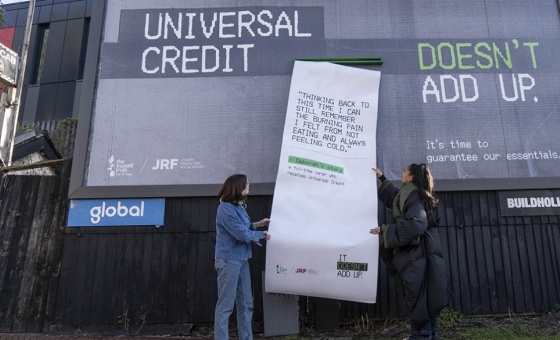This is the last article you can read this month
You can read more article this month
You can read more articles this month
Sorry your limit is up for this month
Reset on:
Please help support the Morning Star by subscribing here
Cities By Design: The Social Life Of The Urban Form
by Fran Tonkiss
(Polity, £16.99)
World Health Organisation figures show that by 1990, less than 40 per cent of the global population lived in cities. But by 2030, 6 out of 10 people will do so and, mid-century, that proportion will increase to 70 per cent.
This book's author Fran Tonkiss - at heart a situationist it would seem - dissects the built, the political and the social morphologies of great agglomerations internationally, charting their capacity to absorb such tectonic shifts of population as well as, crucially, respond to the challenges they pose with a forward-looking democratic vision.
Sustainability is an often-misused term, which she believes requires the shifting of emphasis of perception from form to process. While the interrelation between the two is dynamic and ever-evolving, it is the process that ultimately tests the suitability of form.
Dichotomies are the order of the day and Tonkiss cites Peter Marcuse's argument that "sustainability is not enough if all it means is the durability of socio-spatial forms - even if environmentally sound - but which is inequitable, unjust or inhumane in social or economic terms."
Such inequalities are gauged using the Gini coefficient, one of whose functions is to measure inequality based among other factors on levels of income on a 0 to 1 scale, with 1 representing extreme inequality.
Gini has a few surprises in store. Beijing, with 0.22, is the most equal among cities in the developing world. It's not entirely surprising that among the most unequal cities are the large ones in the US, while London is the richest region of Britain and also its most unequal.
Inequity in cities is defined in part by segregated spaces which are in turn divided by ethnicity, race and income, resulting in a social, economic and political mosaic that is in permanent metamorphosis.
Such segregation provides security in shared identity, solidarity in supportive income generation and adjusted-down costs of living. Yet there is also the pernicious self-segregation of the gated communities for those who are the creators of inequality itself.
"The problem is poverty not where poor people live," Tonkiss maintains and only a fool would disagree.
Cities By Design is a momentous work of uncommon intelligence and clarity that packs a powerful political punch.
Tonkiss lays down the gauntlet to the political Establishment and challenges all of us to radicalise our perception of the cities we, for better or worse, choose to inhabit.
As an edifying urban blueprint for the 21st century, this book is pretty unique.









